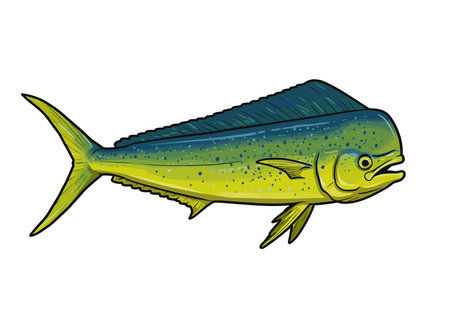Decoding Catfish Habits: Busting Myths and Nailing Down Facts
If you want to get serious about landing more catfish, it’s time to ditch the old wives’ tales and focus on what really matters—the hard science behind their behavior. Too many anglers waste time chasing shadows, believing myths like “catfish only feed at night” or “they’re just lazy bottom dwellers.” The truth? Catfish are opportunistic predators with sharp instincts, and understanding their habits is your ticket to filling the cooler. Field research and real-time sonar studies show that catfish are active round the clock, moving between cover and open water based on water temperature, oxygen levels, and food availability—not just darkness. They aren’t mindless scavengers; they use their keen senses of smell and vibration detection to hone in on prey. If you want to up your game, you need to start thinking like a catfish—analyzing conditions, reading structure, and adapting tactics on the fly. Forget fishing by hunches; success comes from blending science with boots-on-the-ground experience. In this article, we’ll break down the proven facts about catfish behavior so you can fish smarter—and haul in bigger stringers every trip.
2. Prime Time: Understanding When and Where Catfish Feed
If you want to put more catfish in the boat, it’s not just about tossing a line and hoping for the best. The real edge comes from knowing exactly when and where catfish are on the hunt. Let’s break down the prime feeding windows, their go-to habitats, and the environmental triggers that fire up their activity—essentials for any hardcore angler chasing that next big haul.
Feeding Windows: Timing Is Everything
Catfish aren’t active round-the-clock; they have specific periods when they’re most aggressive and willing to bite. Generally, these fish are crepuscular feeders—meaning dawn and dusk are their golden hours. But don’t overlook nighttime either, especially during summer when waters heat up. Here’s a quick breakdown:
| Time of Day | Catfish Activity Level | Best Tactics |
|---|---|---|
| Dawn (4am-8am) | High | Shallow flats, fresh bait |
| Dusk (6pm-10pm) | Very High | Edges of current, live bait |
| Night (10pm-2am) | Moderate-High (summer) | Deep holes, cut bait |
| Midday | Low (unless overcast or rainy) | Deep structure, heavy scent baits |
Preferred Habitats: Reading the Water Like a Pro
Catfish aren’t random drifters; they hold tight to structure and cover that gives them an edge both for ambushing prey and avoiding predators. Target these hotspots to up your odds:
- Bends in River Channels: Look for outside bends with deeper water and slower current.
- Sunk Logs & Brush Piles: Classic catfish magnets—especially flatheads.
- Muddy Flats: Especially at night or after rain storms when food washes in.
- Dams & Spillways: Oxygen-rich water attracts baitfish—and big cats follow.
- Coves & Backwaters: Prime spots during spawning season or high water.
Environmental Triggers: What Fires Up the Bite?
Certain conditions can turn a slow day into a full-blown feeding frenzy. Serious catmen keep an eye on these key factors:
| Trigger | Description/Effect on Catfish Movement | Tactical Adjustment |
|---|---|---|
| Water Temperature Rising (Spring/Summer) | Kicks off aggressive feeding as metabolism spikes. | Fish shallow early; move deeper as day heats up. |
| Barometric Pressure Drop (Pre-Storm) | Cats get active and feed hard before weather fronts. | Hit favorite spots right before storms roll in. |
| Muddy/Rising Water Levels | Bait gets washed in—cats prowl newly flooded areas. | Target fresh inflows, creek mouths, and submerged cover. |
| Nights with Full Moon (Summer) | Cats may spread out to feed across open flats. | Bump baits slowly across wide areas rather than tight cover. |
The Bottom Line for Serious Anglers
If you want to consistently hook up with big cats, study their patterns like a biologist but hunt them like a predator. Dial in your timing, read the water for prime structure, and watch those environmental cues—they’ll tell you when it’s time to go all-in. That’s how you get results, not just stories at the dock.

3. Sensing Success: How Catfish Use Their Senses to Hunt
If you want to catch more catfish, youve got to think like one. Catfish are not your average freshwater fish—theyre built for the hunt, even in muddy or dark water where visibility is near zero. The secret sauce? Its all about their supercharged senses. Lets break down how these river bruisers use enhanced biological adaptations to become apex predators, and how you can hack their instincts to stack up more hookups.
Smell: The Underwater Bloodhound
Catfish come loaded with an insane sense of smell, thanks to thousands of olfactory receptors lining their nostrils. Were talking detection levels that put a bloodhound to shame—catfish can pick up trace scents from miles away, even in murky water. For anglers, this means stink baits, cut baits, and even homemade concoctions with pungent aromas can be deadly effective. If it reeks, it speaks to a catfishs primal hunting drive. Dont be afraid to experiment with different scent profiles until you find what triggers strikes in your local waters.
Taste: Tactile Tongues on Overdrive
Its not just the nose—catfish have taste buds everywhere, from their barbels (whiskers) to their fins and even skin. This gives them the ability to sample their environment as they cruise along the bottom. When a catfish mouths your bait, its not just nibbling—its running a full chemical analysis. Soft baits infused with real food extracts or oily substances can keep a cat interested longer, giving you a better shot at a solid hookset. Skip artificial scents that don’t match local forage and go for the real deal whenever possible.
Lateral Line: Reading the River Like Radar
The lateral line system is a game-changer for catfish. It’s basically a built-in radar array that senses vibrations and movement in the water. Even if they cant see or smell prey, they can feel its presence. This is why live bait like shad or bluegill—or even lively cut bait chunks—can trigger aggressive responses. To capitalize on this, use rigs that allow your bait to move naturally with the current or impart subtle action when stationary. In high-pressure waters where catfish get wise to static presentations, a little wiggle goes a long way.
Putting It All Together: Outthinking Your Quarry
Understanding these killer adaptations is how you outsmart big cats. Deploy strong-smelling baits, pay attention to how your offering tastes and feels underwater, and use setups that maximize natural movement. When you tune into the sensory world of the catfish, youre no longer guessing—youre playing chess while everyone else is playing checkers.
4. Reading the Water: Locating Catfish Like a Pro
If you want to up your catfishing game, mastering the art of reading water is non-negotiable. Catfish are creatures of habit, favoring certain spots based on structure, current, and depth. Learning to interpret these factors separates the weekend warriors from the real river rats. Here’s how you can use science-backed strategies and American angling know-how to find those honey holes every time.
Understanding Currents and Eddies
Catfish aren’t fighting current all day—they’re opportunists. They hang where food comes to them with minimal effort. Focus on slack water just outside main currents, behind boulders, or along river bends. In lakes, look for subtle movement caused by wind or inflow creeks—catfish track these like bloodhounds because bait gets funneled right to them.
Structure: The Underwater Highway
Think of submerged logs, rock piles, bridge pilings, and drop-offs as interstate rest stops for catfish. These structures give cover and ambush points for feeding. If you’re fishing a new spot, use sonar or mapping apps to pinpoint these features before wetting a line. Night or day, catfish stick close to the edges of structure when hunting.
Hot Spot Cheat Sheet
| Structure Type | Best Time to Fish | Species Likely Found |
|---|---|---|
| Bends & Deep Holes | Daytime (Summer) | Blue & Channel Catfish |
| Shallow Flats (near deep water) | Night/Early Morning | Flathead & Channel Catfish |
| Submerged Timber/Riprap | Dawn/Dusk | All Species |
| Mouths of Tributaries | After Rain/High Water | Blue Catfish |
Depth Dynamics: Dialing In Your Presentation
The depth you target changes with seasons and weather. In summer heat, big cats hunker down in deeper holes during daylight and roam shallower flats at night. Spring brings them shallow to spawn; winter sends them back deep. Adjust your rigs and weights so your bait stays in the strike zone—not drifting above uninterested fish.
Pro Tip:
When fishing rivers, don’t ignore outside bends with undercut banks—they collect debris and baitfish, making them prime catfish territory. In lakes, key in on creek channels that intersect with flats or drop-offs; these intersections create underwater crossroads that catfish patrol like clockwork.
Nail these fundamentals, trust your instincts, and always pay attention to what the water is telling you—because understanding where catfish live is half the battle won.
5. Adapting Tactics: Matching Bait and Presentations to Catfish Behavior
If you want to consistently land big cats, you can’t just cast out and pray—they’re too savvy for that. Understanding how catfish react in real time and tweaking your approach on the fly is what separates seasoned anglers from the rest of the pack.
Reading Catfish Cues: The Real-Time Advantage
Catfish send signals—subtle bites, line twitches, even the way they swirl near structure. Hardened river rats know how to read these signs. If you feel a soft tap instead of a hard run, it’s time to downsize your bait or switch to something with more scent, like fresh-cut shad or chicken liver. When the bite’s aggressive, don’t be afraid to upsize your offering; sometimes a chunky blue or flathead wants a mouthful.
Switching Rigs for Changing Conditions
Don’t get locked into one rig. If fish are hugging the bottom and barely moving, swap to a slip-sinker rig and let your bait sit still. But if you notice more activity mid-water or around cover, try a float rig or even drift fishing to keep your bait in their strike zone longer. Adjust your leader length too—a shorter leader when fish are tight-lipped, longer when they’re cruising.
Bait Selection: Freshness and Scent Matter
Catfish live by their noses. When you’re not getting bit, check your bait—old or washed-out baits lose their punch fast. Fresh bait will out-fish frozen every time. In stained water, use stinkier options like dip baits or punch baits; in clear water, go natural with cut bait or live offerings.
Pacing Your Presentation
Some days, cats want it still; others they want it moving. Don’t be afraid to experiment—let your bait sit longer during cold fronts when fish are sluggish, but pick up the pace with slow drags or short lifts when temps rise and activity increases.
Hard-Won Tips from the Riverbank
The best advice? Stay flexible. If what you’re doing isn’t working after 20-30 minutes, change it up. Move spots, switch baits, tweak rigs—whatever it takes. The most successful catmen are relentless tinkerers who trust their instincts and learn from every miss and hookup.
6. Seasonal Moves: How Conditions Change Catfish Patterns
If you want to consistently fill your stringer with big cats, you’ve got to think like one—and that means tracking their moves as the seasons change. American waters are dynamic, and catfish don’t just sit in one hole all year long. Let’s break down how spring, summer, fall, and winter shift catfish behavior, so you can stay two steps ahead and maximize your catch rate every month.
Spring Surge: The Awakening
As water temps climb out of winter’s chill, catfish get active—big time. Channels and blues move shallow to feed hard before the spawn. Look for them on warming flats near deep water and creek mouths where baitfish pile up. Use stink baits or cut shad and work those transition zones hard; aggressive strikes are the name of the game now.
Summer Patterns: Beat the Heat
When the mercury rises, catfish go deep during daylight to stay cool, but don’t let that fool you—they’ll slide shallow at night to hunt. Target river bends, undercut banks, and deep holes by day with heavy rigs. After dark, set up along flats and shallow points where they prowl for an easy meal.
Fall Transition: Feeding Frenzy
As water temps drop, catfish sense winter coming and pack on weight. This is prime time for trophy fish. Baitfish start moving back into creeks and coves—follow them, because that’s where the cats will be. Use live bait or fresh-cut chunks and stay mobile; hit multiple spots until you find a bite window.
Winter Lull: Go Deep or Go Home
Colder water slows metabolism, pushing cats into deep wintering holes where current is minimal. Focus on slow presentations with smaller baits right on the bottom. If you’re in southern states where it doesn’t freeze up, some action can still be found near power plant outflows or warmer tributaries.
Pro Tip: Watch the Water Temp
Invest in a quality thermometer—knowing when temps cross key thresholds (like 55°F in spring) puts you ahead of the crowd. Catfish don’t follow a calendar; they follow comfort zones and food sources dictated by temperature shifts.
Year-Round Success
The hardcore angler adapts to seasonal changes instead of fighting them. Dissecting these patterns lets you predict exactly where catfish will be—and what mood they’ll be in—any time you launch your boat or cast from shore. That’s how science turns fishing luck into a calculated edge.


